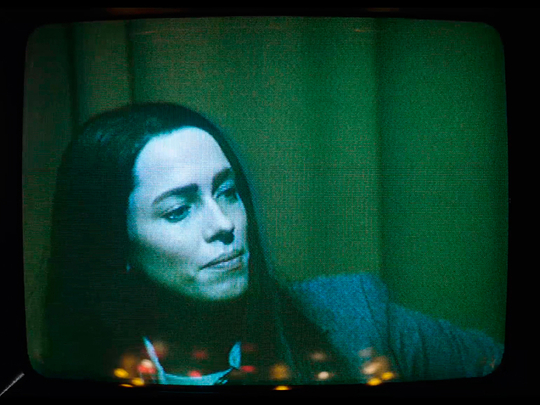
When two movies are released at about the same time on the same subject, the topic is often something silly and big and spectacle-filled, like Armageddon and Deep Impact or White House Down and Olympus Has Fallen.
But this year at the Sundance Film Festival, audiences found themselves with an unusual double feature. The festival hosted the premieres of two films exploring the largely forgotten story of Christine Chubbuck, a 29-year-old on-air journalist in Sarasota, Florida, who shot and killed herself during a live broadcast on July 15, 1974.
One, “Christine,” is a fictionalised, narrative depiction of her life before the suicide, starring Rebecca Hall. The other is an experimental documentary about an actress, indie mainstay Kate Lyn Sheil, preparing to portray Chubbuck called Kate Plays Christine.
“I was kind of shocked that there had never been a movie made about it,” said Kate Plays Christine director Robert Greene. “It’s the kind of story that makes you think about why you want to know about it. I still haven’t answered that to this day.”
The moments before Chubbuck shot herself have been cited as the inspiration for the 1976 Sidney Lumet film Network and Peter Finch’s mad-as-hell anchor.
On the morning of July 15, a tape from the scene of a local shooting from the night prior didn’t roll. Chubbuck, sitting behind the anchor’s desk, then said, “in keeping with Channel 40s policy of bringing you the latest in blood and guts and in living colour, you are going to see another first — attempted suicide,” before taking the gun out of her bag and pulling the trigger.
She’d even left a written news item about her own suicide on the desk.
Christine director Antonio Campos learnt about the story when screenwriter Craig Shilowich approached him with a script.
“Craig dug very deep and tried to understand her,” Campos said. “For me, having learnt about it through this script made it so much more human.”
Hall questioned the utility of telling the story at all, but the script convinced her otherwise.
“I do think there’s something quite irresponsible about glorifying something as some sort of macabre act of heroism when actually it’s a tragedy and awful and she shouldn’t have died,” Hall said. “I read the script and thought, ‘Oh, it doesn’t do that. What it does is make a human case. It makes an audience understand mental illness and sympathise with it.’”
Both filmmakers and actresses had to deal with the fact that there is precious little information available about Chubbuck. They knew that she suffered from depression, that she had to go through a surgery to remove an ovary which would jeopardise her ability to have children, and that she was a virgin. But there aren’t videos online readily available of Chubbuck, and the facts of the story, even in Sarasota, have blurred.
Hall had only one 20-minute taped interview to study, and even that brought up more questions than answers.
The interview is about the rezoning of a hospital and Hall said it’s terribly dry. But she took what she could get and used it as a jumping-off point to study Chubbock’s voice and mannerisms.
“There are a couple of heartbreaking indicators in it that were real prompters for me,” Hall said. “There was this bit where she says something so impassioned and it’s about something really banal.”
Kate Plays Christine operates like a journalistic investigation into the story. They talk to co-workers, townspeople, and even visit the store (now relocated) where Chubbuck purchased the gun.
“The Christine Chubbuck story has always made me stop and take pause and made me think about presumptions I have about women, about myself, about what makes a depressed person go that far. ... It should make you really think about the people you know in your life and what they’re going through and what you’ve gone through,” said Greene. “If that’s one result of these two films being made at the same time, that’s just great.”













